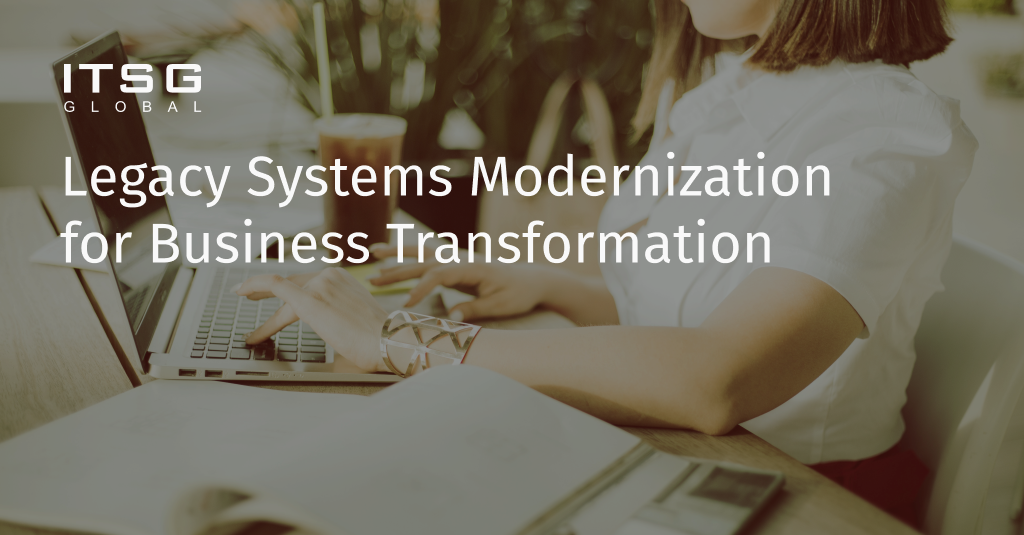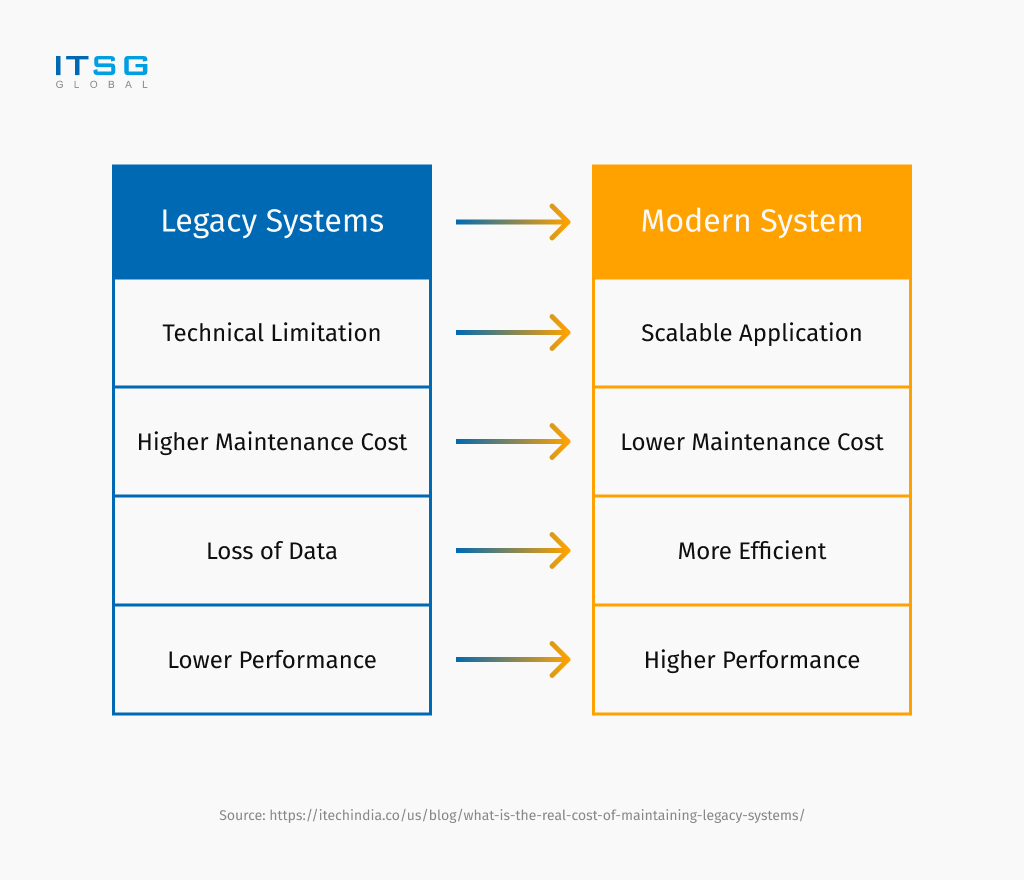3. Januar 2024

There was a time when your company’s software did exactly what it was supposed to do – you invested in a product designed for your needs and you were happy with the outcome. There is a high possibility, however, that since that time your business has expanded and the above-mentioned software did not follow. It’s outdated now and while it still works, the maintenance cost might be only one of its issues.
How does it affect your company?
- some parts of the system have to stay as they are and your current IT team doesn’t know how to implement new features into the system without ruining its crucial parts
- it negatively affects your productivity and it’s generally too slow
- maintenance becomes more and more expensive as time passes, because your team has to spend their time on maintaining the codebase which leaves them with only a little time to develop new features
- it’s difficult to find specialists for older technologies. They are more expensive because few people are willing to work on them
- everyone is complaining. Even if at some point it was user-friendly, that’s not a thing anymore
- majority of system has to be tested manually, which takes a lot of time and is expensive
- you begin noticing problems with recruiting IT specialists familiar with the technology that was used to create that system years back
Those issues translate into specific risks and problems:
- lack of updating options and getting stuck, which might slow down or completely block growing opportunities
- security issues and the risk of unauthorized access
- inability to comply with international regulations like the GDPR, which might pose a legal problem at some point

While problems with Legacy Systems may look like an opportunity to implement a completely new system, it’s not the only option and there are very good reasons why those systems should rather be modernized than thrown away.
First of all — investment in a completely new product would be more expensive.
The second issue would be employees’ reaction to the change – for people who worked on the old system for years, changing that habit might be annoying, which as a result would mean devoting a lot of time to teaching them new procedures from scratch.
Access to documentation is another challenge and potential risk-bearing operation. If the documentation in incomplete and original authors are not longer available, throwing away their work might pose a risk of losing some valuable data.
Legacy Systems Modernisation should be built on pillars that guarantee that the system will be aging like wine, basically.
- Evolutionary Architecture means transforming the existing systems into modules, which improve the flow, but at the same time introducing some new features in one of them doesn’t automatically affect all of them
- Testable Architecture that should allow automated testing, therefore saving time and human energy
- Evolutionary Code that allows constant improvement while new functionalities are being delivered
- Living Documentation – automated and updated, but also understandable by people who are not IT professionals
LEGACY SYSTEMS MODERNIZATION
What legacy system modernization will bring to your table:
- it’s going to cut some maintenance costs and allow easier and cheaper development of new features
- it’s going to make work easier for users
- you will be able to shift your attention to new markets or opportunities, that wouldn’t be available with your old system
- you will be able to focus on growth and not on maintenance
- you will become more competitive
- your customers are going to love the new, improved experience
The legacy systems are critical for many companies and their value can’t be underestimated. But, considering the risks, the only way to use them today is to adapt them to the current needs first.
Author: Andrzej Wodnicki, Managing Director at ITSG Global




